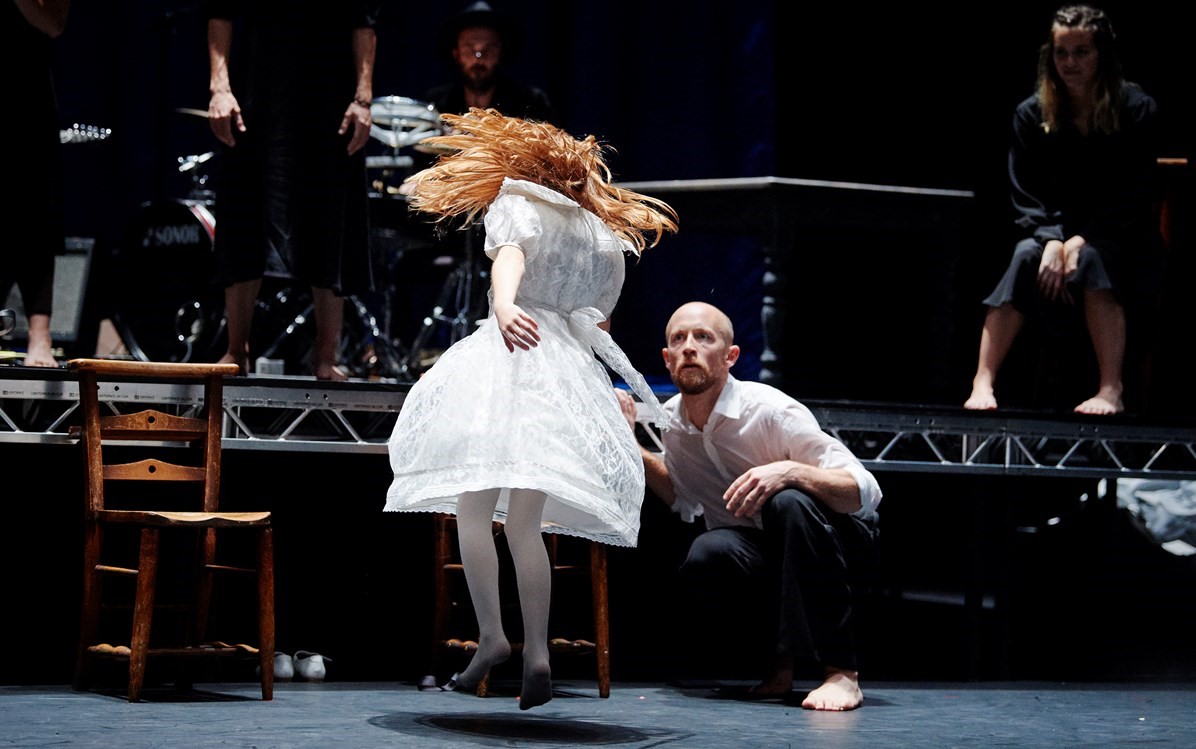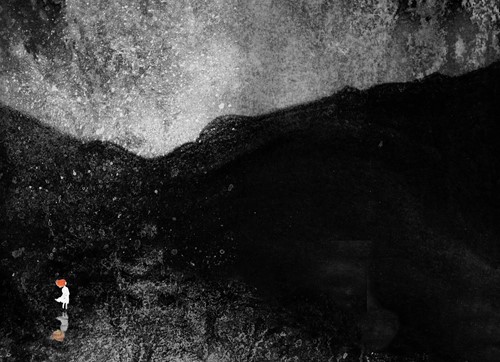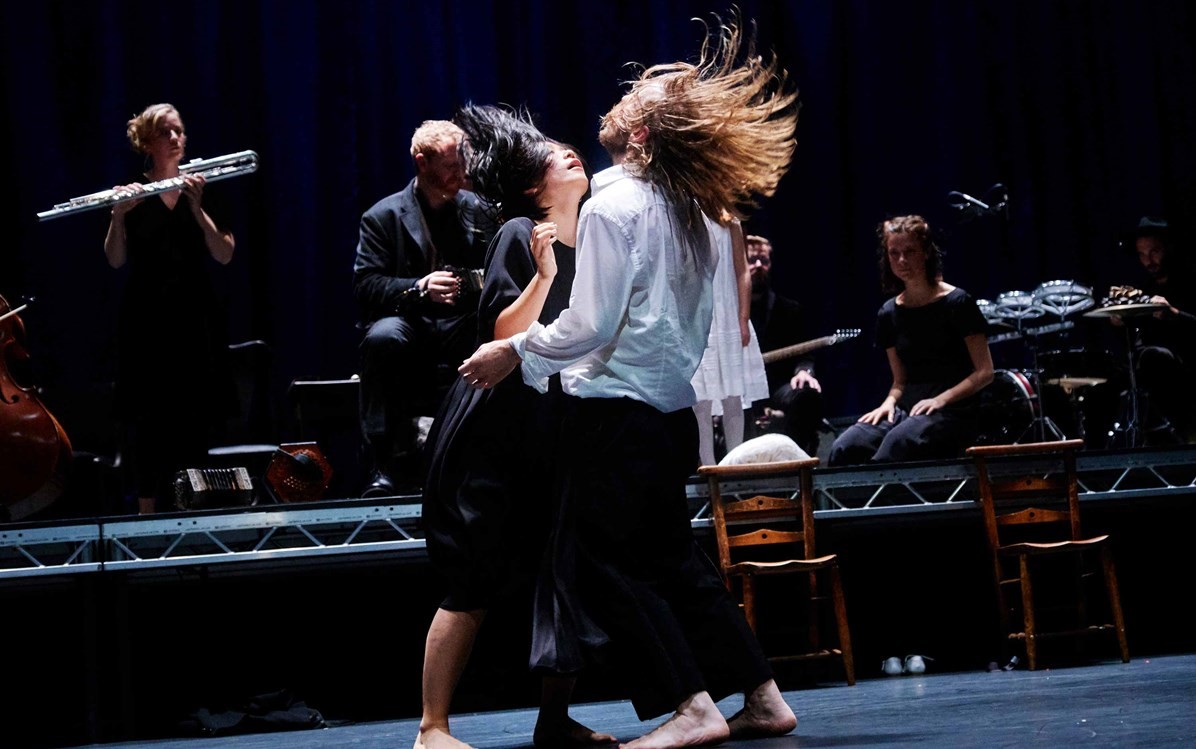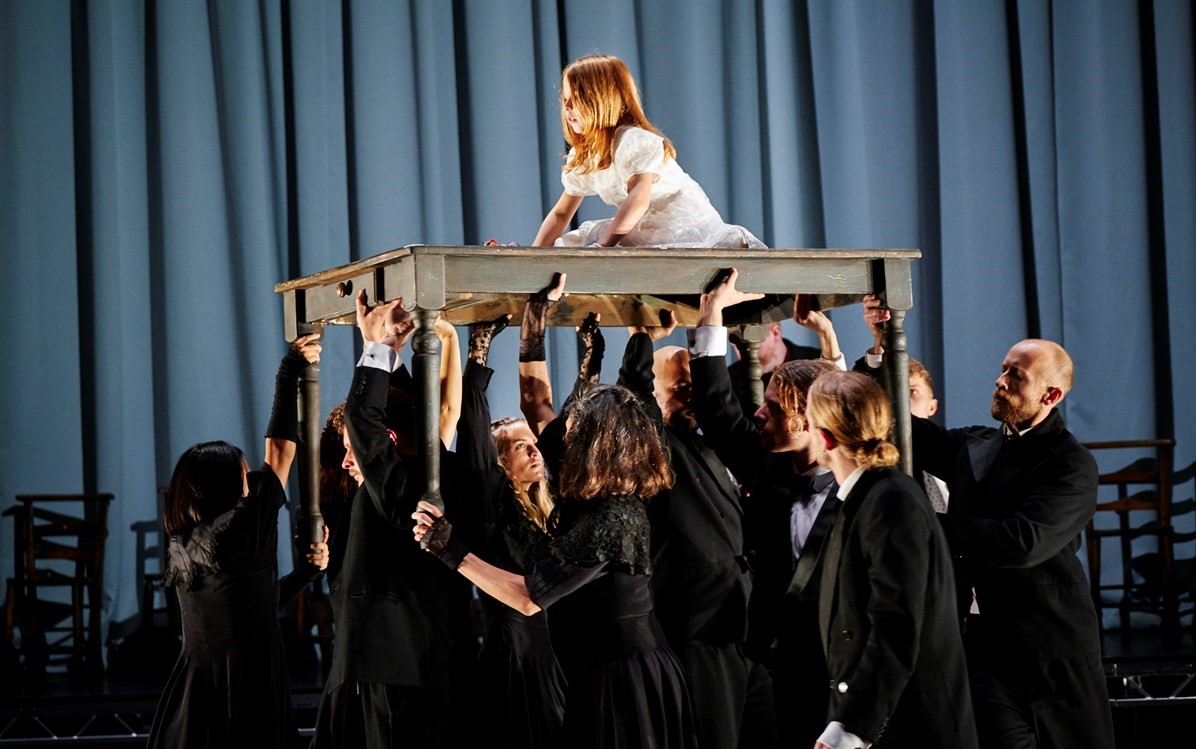
More on MÁM with creator Michael Keegan-Dolan
PICTURE THIS - A single red-haired little girl and twelve dancers summon a whirlwind of myth and magic as they move to music by virtuoso Irish concertina player Cormac Begley and the classical, contemporary collective s t a r g a z e.
Ahead of the stunning international dance-theatre piece MÁM coming to town, we caught up with creator Michael Keegan-Dolan to find out what inspired the work – in particular, the unique name.

Where did the name MÁM come from?
MÁM has a síneadh fada over the A which changes its pronunciation and meaning. A fada makes the A sound long and with it MÁM means Mountain Pass, Obligation, Handful or Yoke. (Yes, four meanings) Without the fada, the word MAM means Mother or Breast
Beneath the brooding slopes of the second largest mountain in Ireland, Cnoc Bhreanainn, in the far western reaches of the Dingle Peninsula, there stands a community hall just up from the seaweed-strewn shores of Traigh na Feothanai. This venue was the crucible for the formation of MÁM – a musical and choreographic exploration of the spiritual and cultural powers that are emerging once again.
The work is informed by the profound immersion in Corca Dhuibhne (the West Kerry Gaeltacht) that Teaċ Daṁsa has experienced over the past two years.
There are no words in MÁM, but much of its creation was incubated within the realm of An Ghaolainn, as the company embarks on a journey to work increasingly through the Irish language in coming years. The word MÁM itself can mean an obligation, a yoke and a handful of goodies, but it’s more commonly used to refer to a mountain pass or the easiest way of surmounting a large geographical obstacle. It’s both an escape route and an accessible entrance-way, but can also be a place of danger, with ferocious funnelled winds and risk of exposure to the elements.
As a Corca Dhuibhne word it captures some essence of this production, which arises directly out of its locality, where the oceanic rain washes off the mountainside, through reedy fields towards the sea cliffs beyond Halla na Feothanai.

How did MÁM come about?
My partner, Rachel, our two children, Milo and Ellie and I moved to the West Kerry Gaeltacht at the very south westerly tip of Ireland in 2017. It’s a wild and beautiful peninsula engulfed on three sides by the North Atlantic Ocean. It is the seat of Ireland’s second highest Mountain, Cnoc Bhréanainn (Mount Brandon), which has the energy and tradition of a scared place. In this part of Ireland the local people speak Irish and there is a strong and long tradition of music and dancing.
I had worked with Cormac Begley back in 2011 on a show that we called Rian, which toured to the Sydney Festival in 2013 and we had stayed in contact over the intervening years. Cormac is a native of the west Kerry Gaeltacht, his ancestors moved here some 500 years ago. In 2016, the year I made Swan Lake / Loch na hEala, he released a new solo album of concertina music and as soon I heard it, I knew that I needed to work with Cormac again.
For a long time the project was on and off and then on again but last year in 2019, through a tremendous act of will I managed to gather all the necessary forces in one community hall at the foot of Mount Brandon in a pace called Feohanach. We worked together there for about 10 weeks. Cormac and I, 13 dancers from all over the world (three from Australia) and seven classically trained musicians from the Berlin based music collective, s t a r g a z e.
Can you tell us what it’s about?
I wanted to make a piece about meeting or more specifically what happens when different energies, traditions and personalities meet. Do they fight? Do they fall in love? Do they run away or stand their ground? I think the art of meeting skilfully is an important and useful art to explore in some depth.

It’s a work that is very much born out of the land where it was created – how do you think it will change the experience for the performers and the audience to see it on this Country?
For starts all the stringed instruments will go out of tune once they are enveloped by the dry warm air of Western Australia! But oddly Western Australia and West Kerry, although a long way apart have a lot in common – except for the amount of water that falls from the sky, this differs greatly. They are both a long way from what we perceive as the capital city or administrative and economic powerbase in our two respective countries. They are both wild and unforgiving places that draw a certain kind of people. Both have ancient indigenous traditions and languages and both places have had to endure the experience of colonialisation and everything good and bad that this brings with it. There is tremendous beauty and sorrow in West Kerry and Western Australia. They can both inspire that deep sense of mortality in that way that very big nature can.
I have found through work and experience that the more local a piece of theatre or dance might feel the more universal potential to connect it may have. I think it is wise to navigate carefully, the grey area between the local and the universal, as that greyness can bring with it a kind of uncertainty or confusion.
In both Swan Lake (seen in Perth last year) and MÁM you have live music performed onstage by an ensemble – what does this add to the work?
Live music expands the possibility and variety of the energetic vibrations that the dancers, musicians and audience can experience together. Live music demands a type of enhanced concentration and awareness creating an experience far beyond that which happens when one works with playback.
Playback starts when a person pushes a button and it ends with the same action. Eight musicians playing together with 13 dancers listening and feeling and experiencing the sound together is risky and alive. It can fall apart. It can go wrong. But when it flows together, bends and folds it makes us experience what is possible when we truly connect.
Are there stories or themes that can be better explored through music and movement than through dialogue?
I am not sure the stage is a place to explore themes. People buy tickets, arrange babysitters, pay for parking – they make a real effort. We the makers and performers are responsible for taking care of them for an hour and a half. Taking them on a journey to familiar and unfamiliar places. We can do this by using words, songs, music, dances, light, imagery etc. How we do it is of no consequence. I know this as I have experimented with all of the above over the last 20 years. It’s why we do it that is important. I do it because I feel beholden to some kind of inner calling, like a voice, indicating to me that something, a story, an event or a sensation is important and needs to be fashioned into a work of theatre and shared. I can’t make a great deal of sense of it sometimes but it is what it is. I feel that working together in a co-operative, in a communal and caring way is important. That we take care of each other and we share this feeling with our audience. The stories that arise from when we don’t care of each other also need to be told – like the way we use fairy tales, myths, morality tales and murder ballads to bring wisdom and avoid unnecessary cruelty or suffering.
Sadly, words have become increasingly complicated as a means of communication. It is like their meaning has been corrupted through misuse and overuse. I feel like quietness has great power these days. I feel like music and dancing cut through the field of the intellectual, analytical controlling mind. They allow less space for the bullshit to take control – but we need to remain consistently disciplined and diligent in our attempts to communicate with clarity.
MÁM takes to the State Theatre Centre of WA stage from 26 - 29 Feb. BOOK NOW